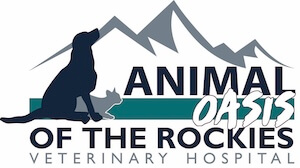What is cancer in dogs?
Cancer, in its medical biological sense, refers to any abnormal tissue growth. During this discussion, I'll focus on the more serious forms of cancer—those that are malignant or metastatic. These types of cancer can spread to other parts of the body or become invasive.
What are the most common types of cancer in dogs?
The most common and concerning type of cancer we often encounter is mast cell tumors, which are a prevalent form of skin tumors in dogs. Other types include bone tumors like osteosarcomas, splenic tumors such as hemangiosarcoma, and mammary tumors. Additionally, although less common, we may see lymphoma, bladder tumors, brain tumors, and squamous cell carcinomas, which can affect bones, gum tissue, or skin.
What are the signs of cancer in dogs?
Signs of cancer in dogs include lumps and bumps, which is why it's crucial to address any such growths with your vet. The most common benign growth is a fatty tumor, but vets often perform a fine needle aspirate to ensure proper diagnosis. Additional signs include loss of appetite or thirst, pain or limping (especially in bone tumors), swelling such as enlarged lymph nodes, non-healing wounds, and rapidly growing, asymmetrical, or unsightly lumps.
How important is early detection of cancer in dogs?
Early detection is critical, especially if cancer is localized to a specific area. Performing surgery to remove it before it spreads can save and extend a dog's life. If a dog presents with multiple lumps or significant weight loss due to cancer spread, the focus shifts to quality of life and potential treatments like chemotherapy and radiation therapy. Thus, early intervention is key in managing cancer effectively.
How is cancer diagnosed in dogs?
Diagnosis often starts with a fine needle aspirate, where a small needle is used to extract cells from a suspicious area for microscopic examination. Although not perfect, this method helps identify suspicious cells. A more definitive diagnosis is achieved through a biopsy, which involves removing a tissue sample for examination by a pathologist. Additional tests like x-rays can indicate cancer if lesions or abnormalities are observed in organs like the lungs or spleen.
What are the treatment options for cancer in dogs?
Treatment varies depending on the type of cancer. For skin cancers, removal might suffice. If the cancer has spread, long-term steroids may be used to manage symptoms. Consulting a veterinary oncologist is also an option. Unlike human treatment, veterinary oncology focuses on maintaining the pet's comfort and quality of life, often involving chemotherapy and surgery.
What are the common side effects of cancer treatment in dogs?
Common side effects, particularly from chemotherapy, include nausea, weight loss, and bone marrow suppression, necessitating regular blood work. Radiation therapy may cause site irritation, and surgical treatments may lead to pain or infection at the surgery site.
If you still have other questions and you'd like to reach out to us, you can call us directly at (303) 900-7765, or you can email us at [email protected]. But please do reach out, and we'll get back to you as fast as we can. Don't forget to follow us on social media Facebook, Instagram
